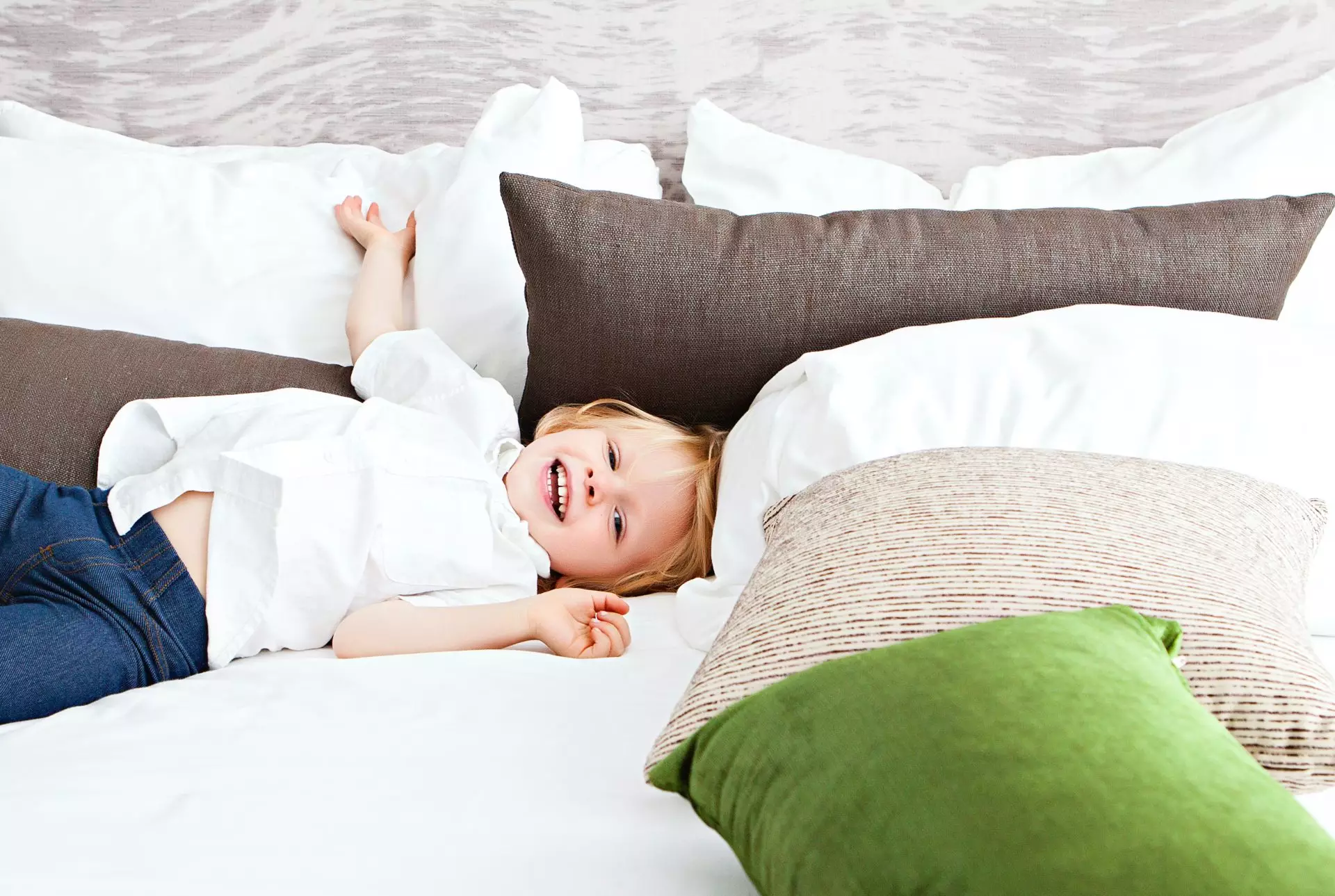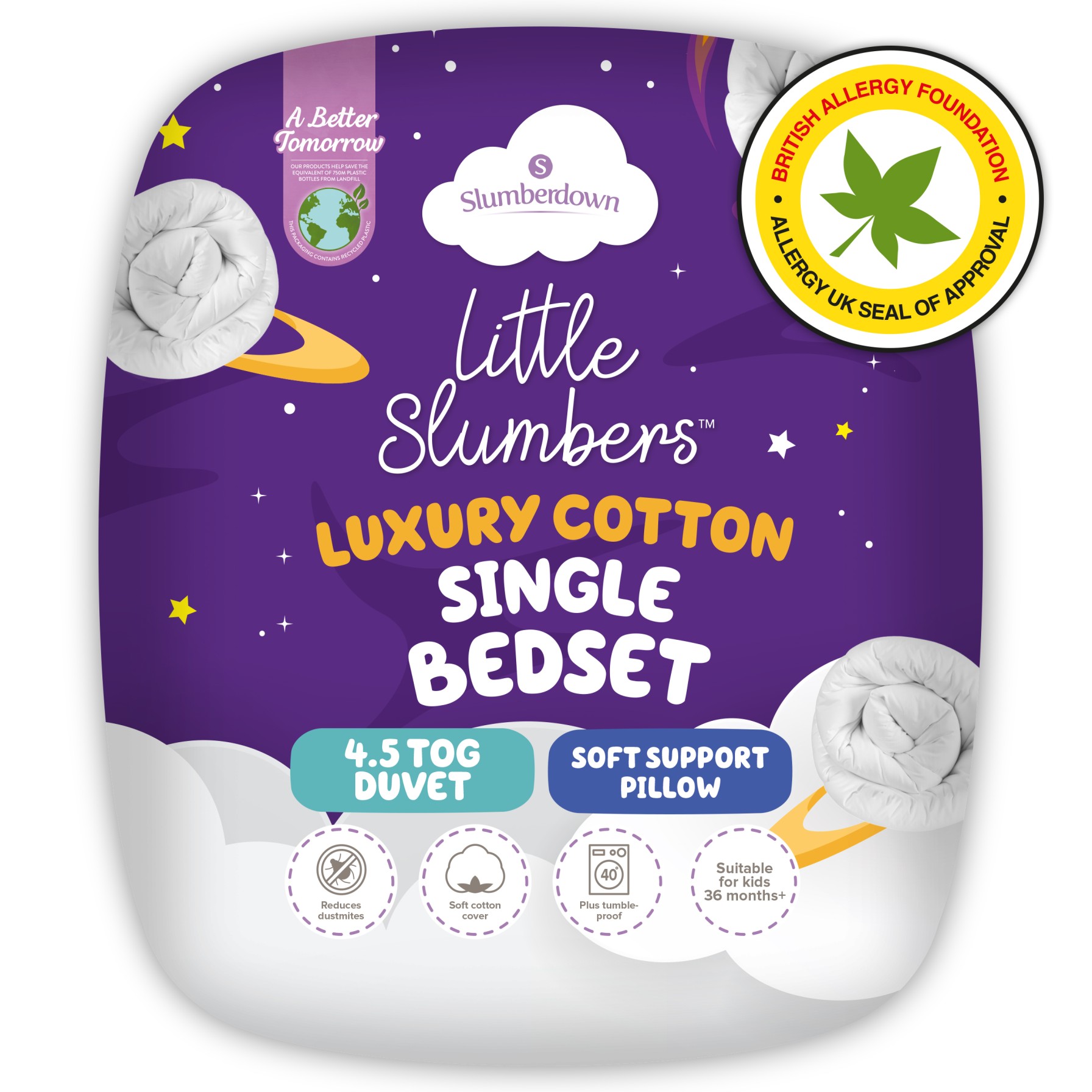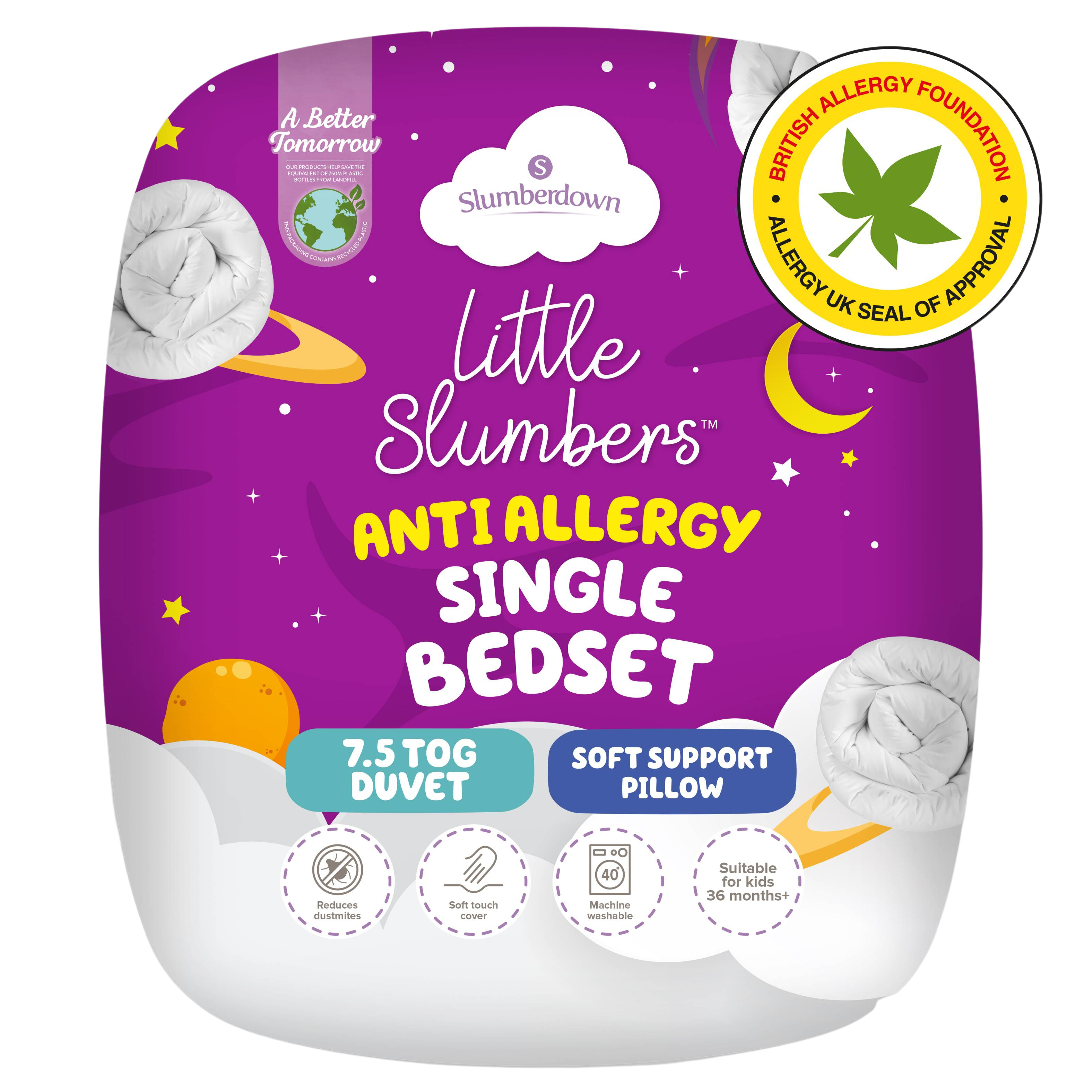There’s nothing sweeter than a sleeping baby wrapped up all sound and cosy. However, fluffy duvets and tiny pillows can pose a hazard to your new-born, so how long should you wait before introducing a duvet to your infant’s sleep space?
If you’re waiting for your little one to arrive, an infant duvet shouldn’t be at the top of your shopping list. While a child-sized duvet is often an excellent bedding item for toddlers, it’s not appropriate for babies.
Read on for a guide on when a baby can safely have a duvet and how to choose the right one for your needs.
What age can a baby have a duvet?
Most experts recommend holding off on duvets and pillows until your little one is around 18 months to two years old. Babies younger than this sleep safest when you wrap them in a swaddling blanket and place them in a clean, flat, elevated area. As such, most new-born bassinets and bedside cots are relatively similar in their simplistic style and construction.
As your child begins to grow and move around on their own, you may be tempted to purchase a bedding set for their cot. Many cot bedding sets include bedsheets, bumpers, and bed skirts which are perfectly fine for protecting your little one as well as their sleep space, as long as they fit snugly into the cot and do not move around, which could be dangerous and run the risk of your infant getting caught up.
However, heavier and bulkier bedding accessories such as comforters, blankets, and duvets should be avoided until your child is older – as adults we are accustomed to feeling cosier and more comfortable wrapped up in a snuggly warm duvet, but rest assured your baby will be just as comfy swaddled in a blanket. Bigger items of bedding can prove dangerous to small faces and fists; just as with baby pillows, baby duvets pose a suffocation risk.
SIDS, or sudden infant death syndrome, affects more than 200 babies in the UK each year. Ensuring that your child’s bedding area is free of potential hazards is crucial to help protect them from SIDs. Most SIDs deaths occur before a child has reached six months. However, the most significant decrease in risk only happens when a child has passed their first birthday.
Why babies under 1 should not have a duvet
Children under the age of one should not have a duvet because they can pose a physical risk to infants. Children under one don’t have complete control of their bodies yet, and they have little understanding of potential threats and dangers around them as well as an inability to remove themselves from harm’s way.
Because infants do not possess the coordination or physical strength to unwrap themselves from a duvet, parents should take extra care to avoid them during the first year of their child’s life. Blankets pose a danger, especially those made of thick material or heavy yarn.
However, if a family member or friend gives you a baby blanket or duvet, you can safely store these items away until your child is of an appropriate age to use them. Of course, you can choose to buy new duvets when your little one is ready. After all, there are hundreds of different options from which to choose, allowing you to pick the ideal duvet for your toddler.
Choosing the right duvet for your toddler
When your child is old enough to use a duvet safely, you have a wide variety of options available to you. Picking the best choice for your child can be challenging if you’re unfamiliar with common duvet materials, thicknesses, and features.
To buy the right duvet for your toddler, you’ll want to consider:
1. Material
Some mixed fabrics can trigger allergic reactions. As such, many parents opt for natural fibres like cotton. When choosing a duvet for your little one, always consider hypoallergenic duvets first. Doing so can help keep your baby’s skin healthy and rash-free.
2. Thickness
Secondly, you’ll want to consider duvet tog ratings. Some climates are cooler or warmer than others, so it’s wise to consider temperature when choosing a duvet. Parents living in warmer homes may want to pick a duvet with a low tog rating, while those in cooler climes should consider duvets with higher tog ratings. As a rule of thumb, a lower tog such as 4.5 tog is recommended for infants.
3. Softness
Softness is an essential aspect of choosing a high-quality baby duvet. If your chosen duvet is too rough or heavy, your little one might refuse to sleep with it. Fortunately, most infant-sized duvets are designed to be incredibly soft and gentle on sensitive skin. Look out for materials such as cotton and soft-touch microfibre for options that meet this criteria.
4. Washability
Parents may also want to think about washability. Some duvets require professional laundering, while others are suitable for machine washing at home in a washing machine. Because babies tend to make the occasional mess, choosing a machine-washable duvet is often wise so that you can keep it fresh and clean.
5. Safety always
Doing everything you can to keep your baby safe and healthy is part of being a parent. While it can be overwhelming sometimes, you can start by ensuring they have a safe place to sleep.
While baby blankets, duvets, and pillows can be adorable additions to a nursery, they’re not entirely safe. Newborns and children younger than 18 months can suffocate or strangulate themselves with these bedding items, and duvets and pillows have been closely tied to SIDs at this age as well.
When your little one is old enough to safely enjoy a duvet, choose one made of hypoallergenic materials. It’s a great idea to consider thickness and tog so that your child can sleep comfortably throughout the night without either overheating or waking up cold. No matter what kind of duvet you choose for your baby, ensure it’s easy to keep clean and soft enough to ensure your little one gets some rest.



 Ashley Dutton, Sleep Expert
Ashley Dutton, Sleep Expert



